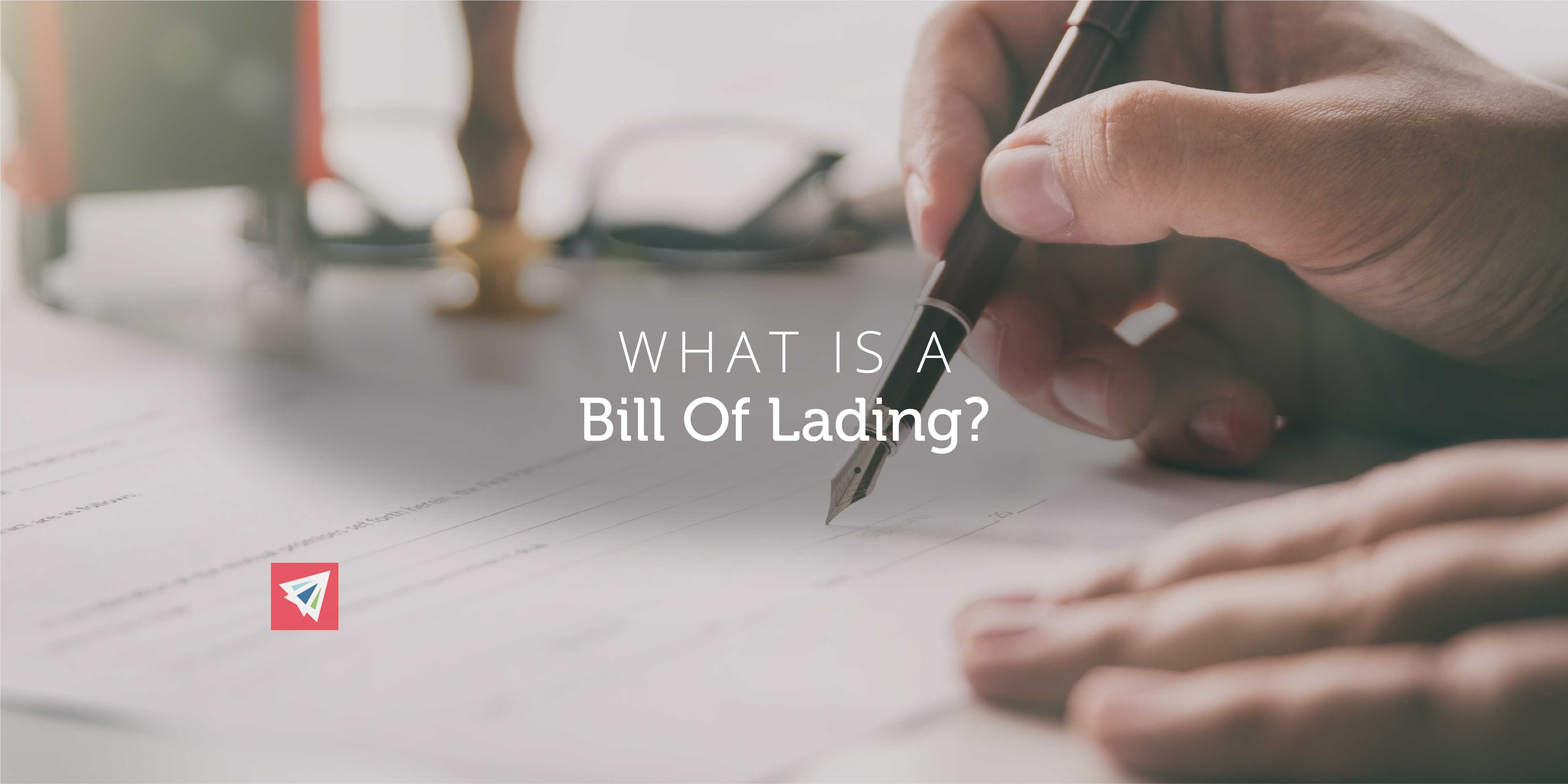A receipt records any purchase you make at a store. If you own the receipt to the goods you purchased, it serves as proof that the goods are your property. This concept applies directly the logistics industry with the Bill Of Lading.
Managing ownership of goods in international transit is not quite as easy as purchasing groceries from the local convenience store. Paperwork must be issued to detail when the goods have transferred ownership between the seller and buyer. This is the role that the Bill Of Lading (BOL) plays in the transportation process.
What is a Bill Of Lading?
The Bill Of Lading plays a few roles. As previously states, the Bill Of Lading serves as a receipt for the goods purchased. The receipt indicates that the cargo has been properly loaded onto the transportation vessel (steamship, airplane, cargo train, etc.) Secondly, the Bill Of Lading serves as evidence of contract of carriage. In other words, the BOL details the type, amount, and destination of the goods being shipped as well as the condition they may be in. Lastly, the Bill Of Lading plays the role of the title of goods, meaning the owner of the cargo is the one in possession of the Bill Of Lading.
What is on a Bill Of Lading?
Here is a basic checklist of what should go onto a Bill Of Lading:
- Carrier Name and Signature OR the Ship’s Master OR a Legal Representative of Either of These Parties
- Date of Confirmation of Goods Being Loaded onto the Vessel
- Port of Loading and Port of Destination
- Terms and Conditions of Carriage or a Reference to These Conditions Listed in Another Document
- Description of Goods in Transit (amount, value, size, marketing, weight, etc.)
- Consignee Name
- Special Instructions for Shipping
What Types of Bill Of Ladings Are There?
These are the most commonly used types of Bill Of Ladings:
Straight BOL
A straight Bill Of Lading is a non-negotiable document. A Bill Of Lading may be named a “Straight BOL” when goods are paid for in full and are shipped directly to the listed consignee.
Original BOL
Original Bill Of Ladings are used to control ownership of the goods when the consignee hasn’t paid for the cargo in full. When the buyer pays the seller in full and presents all original documents the cargo can be released to the consignee.
Shipper’s Order BOL
A Shipper’s Order BOL will be used if a BOL is purchased on credit and handled through a bank. Unlike a “Straight BOL” which is non-negotiable, a Shipper’s Order BOL is a negotiable document. It serves as a title of the goods being shipped. Whoever holds the original (or a copy of the original) Shipper’s Order Bill Of Lading is considered to be the owner of the cargo and may take possession of it at its destination.
Air Waybill
An Air Waybill is a non-negotiable document that is used exclusively for cargo being transported via air.
Inland BOL
An inland Bill Of Lading is used when cargo is being transported via cargo train or truck.
Multimodal/Combined Transport BOL
Goods that are being moved via multiple modes of transportation, such as ocean, air, rail, or truck, will have a Multimodal/Combined Transport Bill Of Lading issued.
Through BOL
A Through BOL is very similar to a multimodal/combined transport Bill Of Lading, however, a Through BOL accounts for all distribution centers and modes of transportation. An ocean and inland BOL need to be effective in order for a Through Bill Of Lading to be issued.
Switch BOL
A Switch BOL is most often used in foreign-to-foreign shipments. It is a Bill Of Lading that helps in “privacy control,” since there will be two sets of bills which are “switched” or “exchanged” to protect the supplier and consignee’s information from each other.
Conclusion
The above mentioned Bill Of Ladings are the most commonly used (although they are only a fraction of those in existence.) Selecting or understanding the correct type of BOL can be an intimidating task if you are handling new project cargo, in charge of this task for the first time, or working with new business that processes their shipments different than you.
If you are ever confused about which type of BOL you should select, or are simply looking for more information on the Bill Of Ladings you have been using thus far, call Interlog USA and we would be happy to help you out.

I spent a great deal of time to locate something such as this